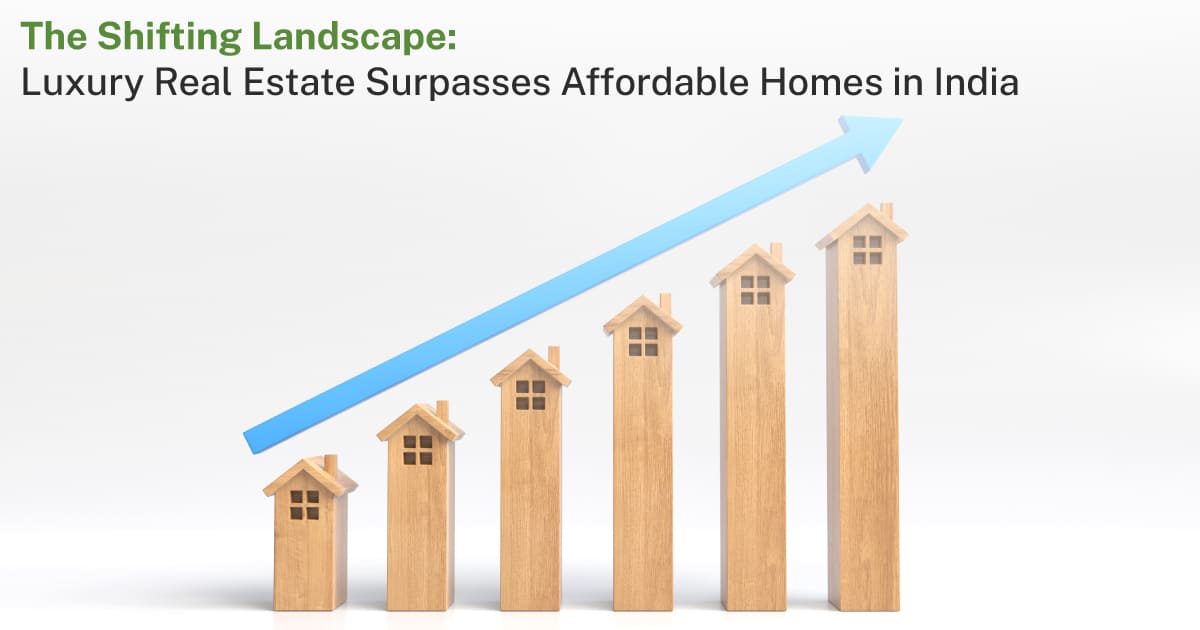
The Shifting Landscape: Luxury Real Estate Surpasses Affordable Homes in India
The real estate industry in India is one of the biggest contributors to the country’s economy, projected to account for 13% of its GDP by 2025. The sector, estimated at USD 265.18 billion by 2023, is forecast to reach USD 828.75 billion by 2028. In fact, Indian residential real estate has been named time and time again as one of the fastest-appreciating housing markets in the world.
According to a report released by a leading real estate consultancy, the total number of homes sold surpassed the number sold in the last six years, with 82,612 units sold in Q3 2023 as opposed to the 73,691 units sold during the same period the previous year. However, it is crucial to understand that not all segments of the industry are performing equally. In recent years, the demand for luxury real estate has been slowly but surely building, with the segment sale of luxury units overtaking the affordable sector for the first time in India. The aforementioned report showcases this with the sales for the luxury segment, which is home priced over Rs 1 crore, with 28,642 units sold in Q3 in 2023 as opposed to the 20,501 units during the same period the previous year, accounting for a 39% Q-o-Q jump.
As opposed to this, while the affordable segment, homes priced from Rs 50 lakh to Rs 1 crore, accounted for a 36 percent market share of total homes sold, this segment witnessed only a 14% Q-o-Q increase. A total of 29,827 units were sold in this segment, with Bangalore accounting for the largest share of the houses sold. Finally, the report also stated that the share of houses priced below Rs 50 lakhs is going significantly down, from 36 percent last year to 29 percent this year.
The trend of the luxury residential market outshining the affordable segment can be attributed to several factors. Let’s discuss some of them.
Booming Economy
The Indian economy’s growth story in the last century has been an unprecedented one. In a little less than 76 years of freedom, the country has not climbed but leapt and bound on the global economic hierarchy, with the country being touted as possessing the fifth-strongest economy in the world. The country’s growing economy, in addition to the rising disposable income of the middle class, has resulted in a mounting demand for upscale residences.
Foreign Investment
The country’s flourishing economy and a liberal policy framework with inviting foreign investment policies have also led to surging interest by HNIs and NRIs in investing in a luxurious second or vacation home in the country. While the buoyant economy assures an investment that is appreciating, these individuals, who are mostly earning in currencies stronger than the Indian rupee, are also able to purchase properties with world-class amenities and prime locations at relatively reasonable prices.
Global Influence
A factor whose importance is often discounted when it comes to discussing the feverish upswing in demand for luxury properties is the impact that exposure to global trends and lifestyles has had on luxury real estate. Buyers today want to invest in properties that reflect their aspirations for an elevated lifestyle that is on par with global benchmarks.
Opportune Investment
Luxury real estate assets are often perceived to have a higher and more stable return on investment. As compared to their affordable counterparts, they are more likely to provide higher rental income and yields while steadily increasing in value. Therefore, they are a great way to ensure a steady source of passive income while increasing the investor’s capital holdings.
To conclude, the rise of luxury real estate in India signifies a shift driven by a booming economy, foreign investment, and global influences. Beyond being a shelter, real estate has become a statement of status and a strategic investment. This transformation reflects not only economic growth but also the evolving aspirations of discerning buyers, marking a new era where opulence and opportunity converge in the Indian real estate landscape.



